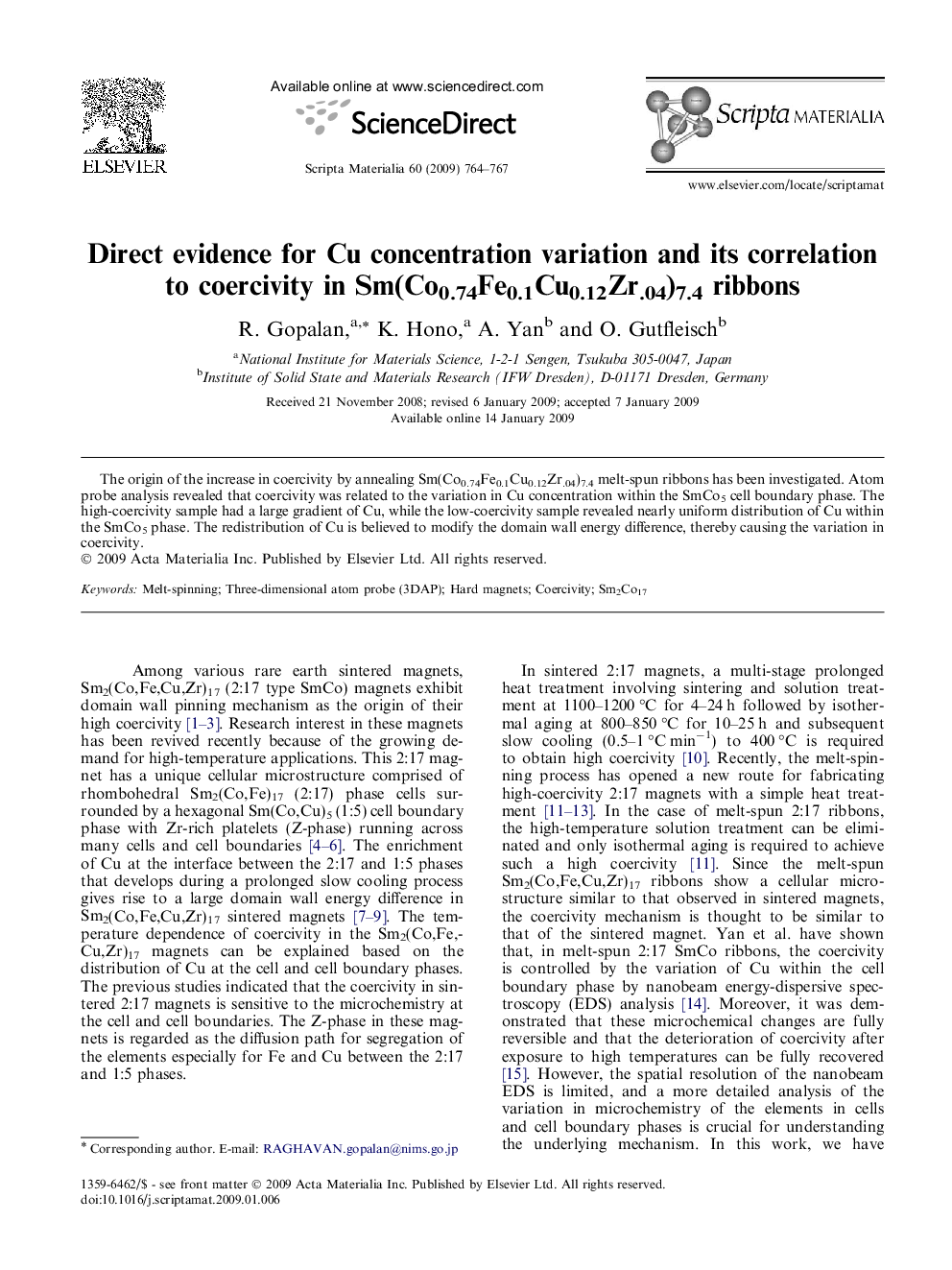| Article ID | Journal | Published Year | Pages | File Type |
|---|---|---|---|---|
| 1502427 | Scripta Materialia | 2009 | 4 Pages |
Abstract
The origin of the increase in coercivity by annealing Sm(Co0.74Fe0.1Cu0.12Zr.04)7.4 melt-spun ribbons has been investigated. Atom probe analysis revealed that coercivity was related to the variation in Cu concentration within the SmCo5 cell boundary phase. The high-coercivity sample had a large gradient of Cu, while the low-coercivity sample revealed nearly uniform distribution of Cu within the SmCo5 phase. The redistribution of Cu is believed to modify the domain wall energy difference, thereby causing the variation in coercivity.
Related Topics
Physical Sciences and Engineering
Materials Science
Ceramics and Composites
Authors
R. Gopalan, K. Hono, A. Yan, O. Gutfleisch,
